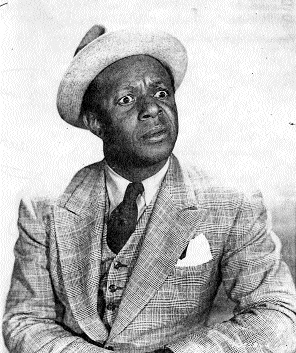The coming of sound film at the onset of the Great Depression momentarily daunted black filmmakers. On the one hand, Hollywood for the first time could exploit black musical traditions, while, on the other, makers of race movies lacked the capital to invest in sound filmmaking or wiring old ghetto theaters. Fortified by sound, white filmmakers acted with unaccustomed boldness. Al Jolson's "talkie" The Jazz Singer (1927) linked the oppression of blacks with that of white immigrants. Several short films attained equal social meaning, among them The St. Louis Blues (1929); Duke Ellington's The Black and Tan Fantasy (1930) and his allegorical Symphony in Black (1934); and Jimmy Mordecai's fable of the black migration from Southern farms to Northern cities, Yamacraw. MGM's Hallelujah! (1929) and Fox's Hearts in Dixie (1929) similarly focused on the tensions of this migration and devoted rare attention to the details of black life. Dudley Murphy's film version of Eugene O'Neill's The Emperor Jones was graced with a charming prologue by the black activist and poet James Weldon Johnson that would have eluded O'Neill. This film closed the brief era of socially engaged films by bringing Paul Robeson to the screen in the title role. Taken together, these films hinted at the "unconventional associations" that James Snead had called for.

However, corporate Hollywood returned to its profit-driven caution. Marc Connelly's Pulitzer Prize-winning musical drama of 1930, The Green Pastures, for example, took half a decade to reach the screen in truncated form. Thereafter, black Americans, as usual, waited for small favors, such as Robeson's "Joe" in a 1936 remake of Showboat, Clarence Muse's rebellious slave in So Red the Rose (1935), Clarence Brook's Haitian doctor in John Ford's Arrowsmith (1931), and ten years of Hattie McDaniel's flip servants in films ranging from Alice Adams (1933) to Gone With the Wind (1939). Other nods at the reality of black life included John M. Stahl's social drama based on Fannie Hurst's novel of the practice known as passing (for white), Imitation of Life (1934), and a sprinkling of black proletarians among the outcasts of Depression-ridden America.
Once again, black makers of race movies strained to fill the void, this time in competition with a cadre of white producers. Micheaux recovered from a bankruptcy, remade his autobiography as The Exile (1931), broke into talkies with The Girl from Chicago (1932) and Swing (1938), and survived the Depression. George Randol, a sometime Broadway actor, joined him, as did William Alexander, who would make black newsreels during World War II, and other blacks. A few interracial films swelled their ranks. In Texas, Alfred Sack and Spencer Williams turned out the evocative The Blood of Jesus (1940), while Muse joined with B-moviemaker Harry Fraser to make a film biography of the boxer Henry Armstrong (played poignantly by himself).

Perhaps because of these white newcomers, race movies achieved a synthesis of black and Hollywood styles in which gangster movies, westerns, and musicals promoted black concerns. At the height of this movement, from 1937 to 1940, gangster movies linked poverty with the incidence of crime and included celebrations of black aspiration. Ralph Cooper's Am I Guilty (1940), for example, obliged a black physician to choose between patching up a crook or ministering to the sick, a version of similar dilemmas in other films of the genre. Some, like Bert and Jack Goldberg's Paradise in Harlem (1940), focused on Harlem's communal spirit, in this case revealed in a jazz version of Othello mounted as a fundraiser to fight urban crime. Similar themes appeared in a 1939-1940 cycle of all-black westerns and a series of Louis Jordan musicals, including one, Beware (1946), in which he saves a black college from closure.